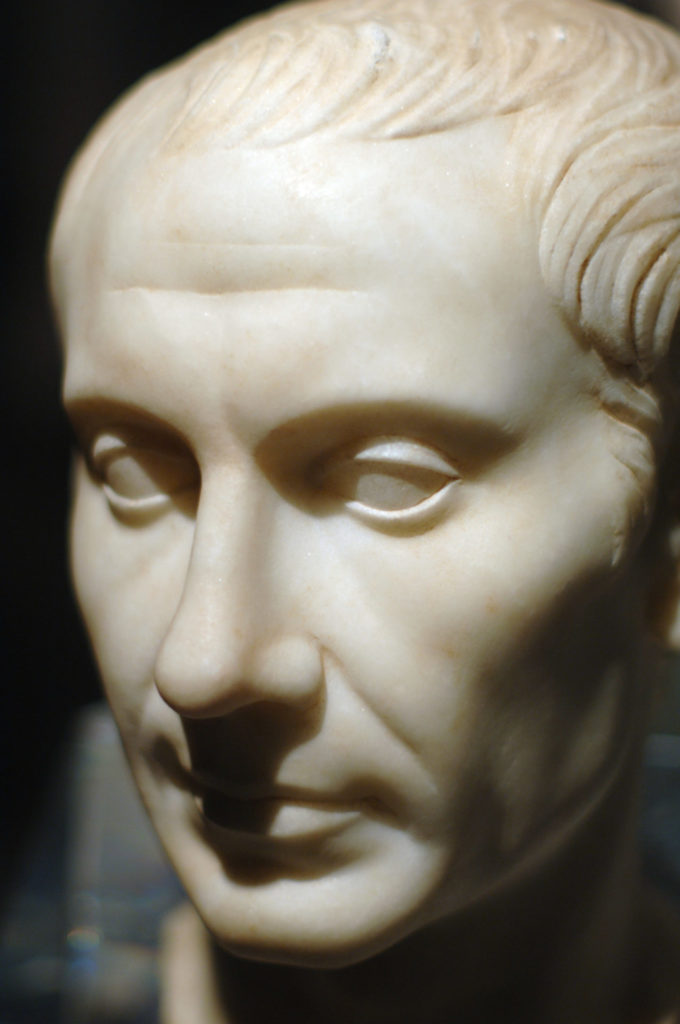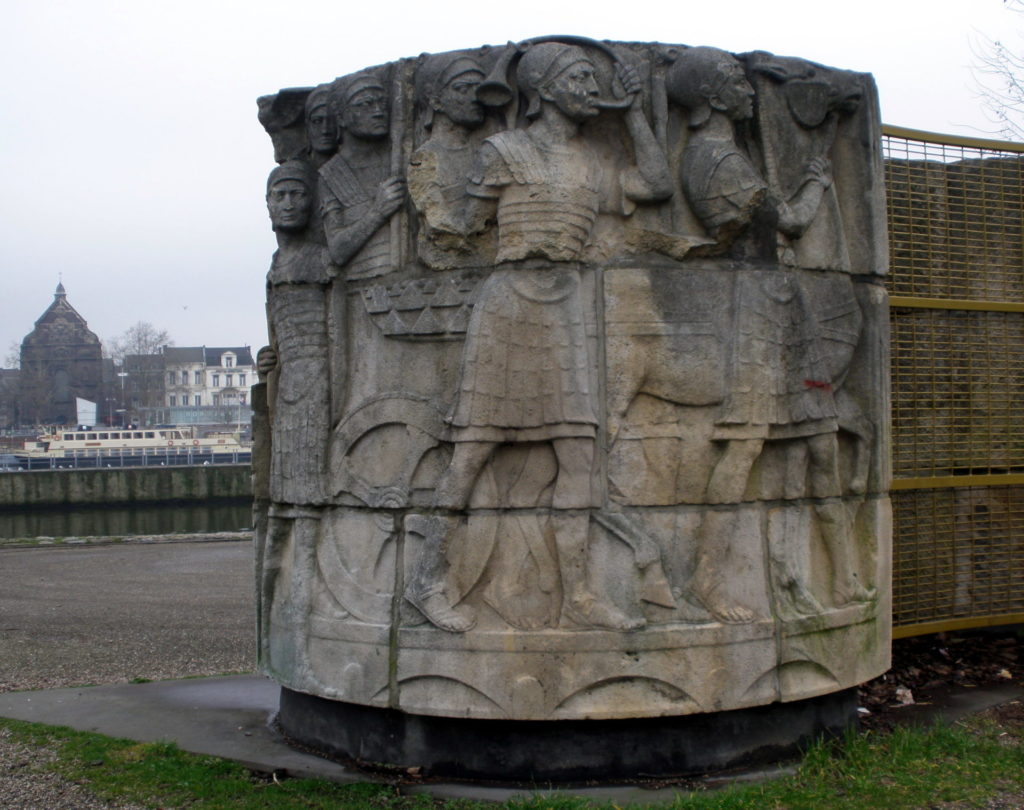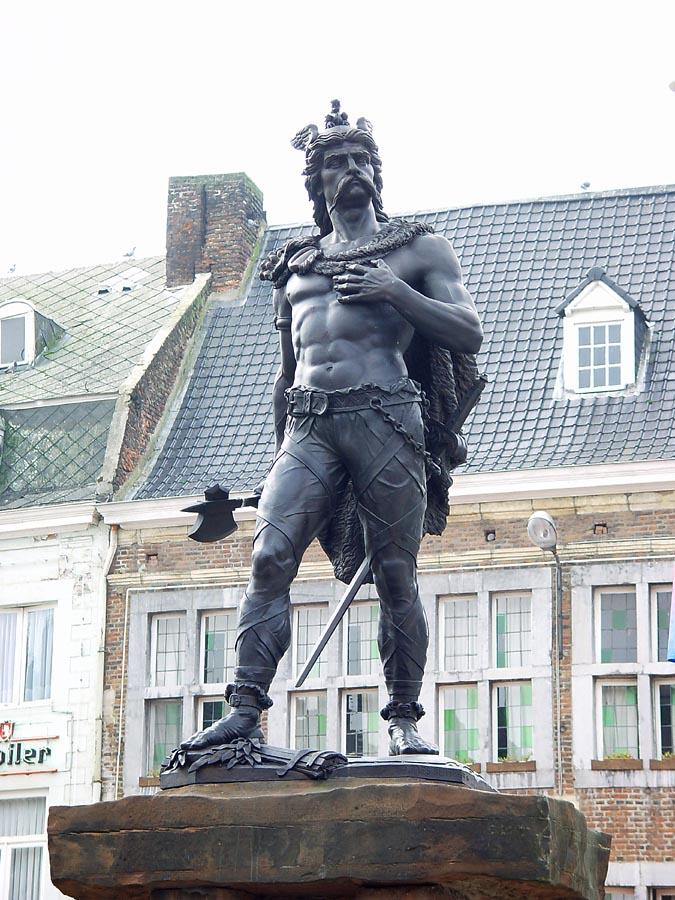Contents
The Gallic Wars

Julius Caesar subjugated Gaul between 58-50 BCE while Rome was still a Republic, and Caesar was one of the First Triumvirate formed along with Crassus and Pompey. His move to attack Gaul was motivated by his debts- which would be alleviated by the booty of war- and his desire to gain distinction among the First Triumvirate while cementing the loyalty of the army.
Caesar’s campaigns inched him closer to the Maas river valley until he engaged a full attack on the Belgae tribes of neighboring lands to the Eburones. The fighting of 55-54 BCE was fierce, with the Belgae holding ground severely damaging Caesar’s strength. Caesar, in turn, rallied and fought exhaustively. The Nervii, in particular, of the Belgae people, would not surrender and bravely held their ground. Fighting in extremely close formation, they were capable of deflecting most Roman military technology. The Romans, therefore, assailed them with projectiles till not a man stood – nor did they surrender. The remaining members of the tribe fled the region as did other tribes who did not want to fall under Roman control.
The Romans then engaged in the decimation of the Belgae villages to suppress any further engagement, and, when faced with this level of destruction to their people, the remaining Belgae tribes surrendered. Those who had not already entered into a peace with the Roman Republic, including the Eburones, submitted to Caesar. Gaul was finally brought under submission and extended the Republic northward.
“…[the region is] largely inhabited by wild and barbaric peoples, some of which will only live on fish and bird eggs.”
Julius Caesar
The Gallic Wars, Book IV
Not all remained quiet. For a few years, minor uprisings would flare up and be stomped out. However, it was the Eburones, under the command of Ambiorix, in nearby Tongeren who wounded Caesar’s pride, and Ambiorix became a proud legend even today among the Low Countries.
Ambiorix
A severe drought caused Caesar’s army to winter near the Eburones, who put stringent demands on the tribe’s villages to supply the military with the grain. Already in a desperate state themselves, the amount needed to sustain the Roman army was too dear to the Eburones, who refused. Caesar responded by splitting up his army into garrisons, settling each near an Eburones settlement to force the supply chain. Resentful and nearing starvation, the Eburones under their commander and prince, Ambiorix, decided to isolate the major garrison outpost of Tongeren. The warriors hit the garrison as if a sneak offensive. Ambiorix then met with the Roman commanders of the garrison. Claiming to be their ally, he warned them that some of his tribe had turned against Rome, emboldened by a massive Germanic army which had assembled and was crossing the Rhine at that moment with the intention of wiping out the entire Roman army.
Gaining the confidence of one of the commanders that he could lead them out of the garrison safely to join forces with another nearby garrison, Ambiorix marched the garrison into a valley and right into an ambush. His tribe, under his command, managed to wipe out five cohorts before a messenger escaped to get word to Caesar. Their successful attack was put down by the number of the arriving rescue forces. Caesar then demanded severe punitive punishment of the already depleted Eburones. Ambiorix escaped into the forest and legend.
After the Eburone revolt, Caesar engaged in a scorched earth policy to suppress all uprisings by starving the tribes of supplies. Those who wanted to fight against Rome were instead dispersed, exhausted, and starved out. Caesar claimed to have wiped out the Eburones as a result of this policy. However, Tacitus, in later decades, refers to them as part of the Tungri people. And there is archaeological evidence that their population most likely dispersed to other tribes but remained within the region.
From Tongeren to Traiectum ad Mosam
By the time Caesar’s great-nephew. Augustus came to lead the new Empire, Germania Inferior, which incorporated the Belgae, Eburones, and the Germanic Limes was decidedly Roman. As a province, the Roman roads were less for army movements and more for connecting several villages and towns, which included established tribal settlements and many new Roman towns. It was at this time that the Via Belgica was constructed to connect the port in northern Gaul with the army stronghold of Tongeren and the administrative capital of Cologne. The Romans created Traiectum ad Mosam as a bridge town nearly at the halfway point between Tongeren and Cologne.
“Gaul is subdued.”
Julius Caesar
Letter to the Senate of Rome, 52 BCE

Traiectum ad Mosam was established to maintain its important bridge across the inconsistent Maas River. It also aided the transport of grain through a network of rivers, with the Rhine and Mass being the most important. These endeavored created a continuity of community around the bridge. That community has remained unbroken until this day.
Do A Deep Dive

The Landmark Julius Caesar includes a heavily annotated translation of Caesar’s works, including the Gallic Wars. It features new maps of the various battles and army movements, devised after extensive archaeological, geological and meteorological study.
Visit the Landmark Histories Series website for more information.
Visit Nearby
Gallo-Roman Museum in Tongeren, Belgium (19 km)

Featuring artifacts from the long history of the region with a particularly excellent permanent collection of Roman, Belgae and Eburones artifacts.

